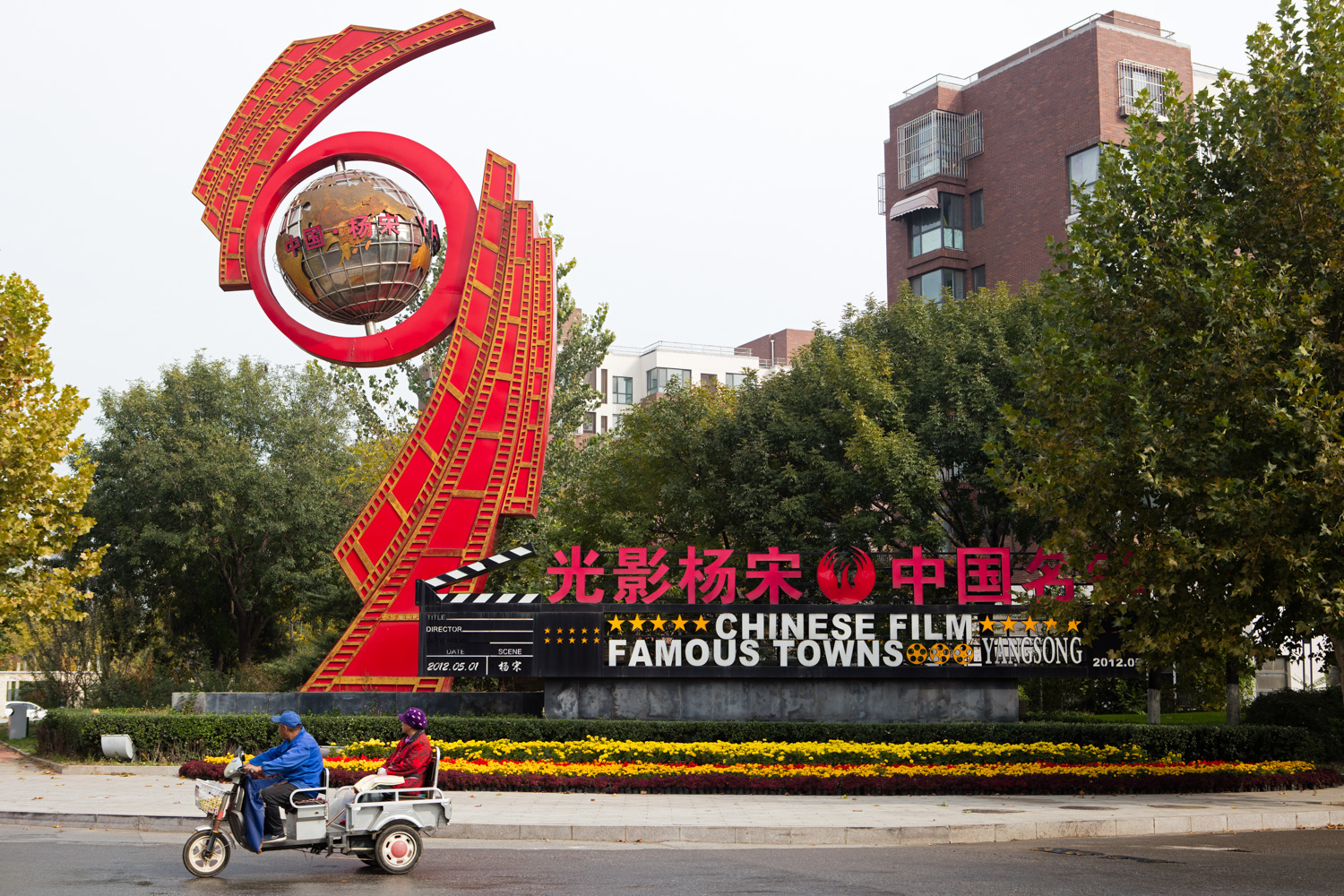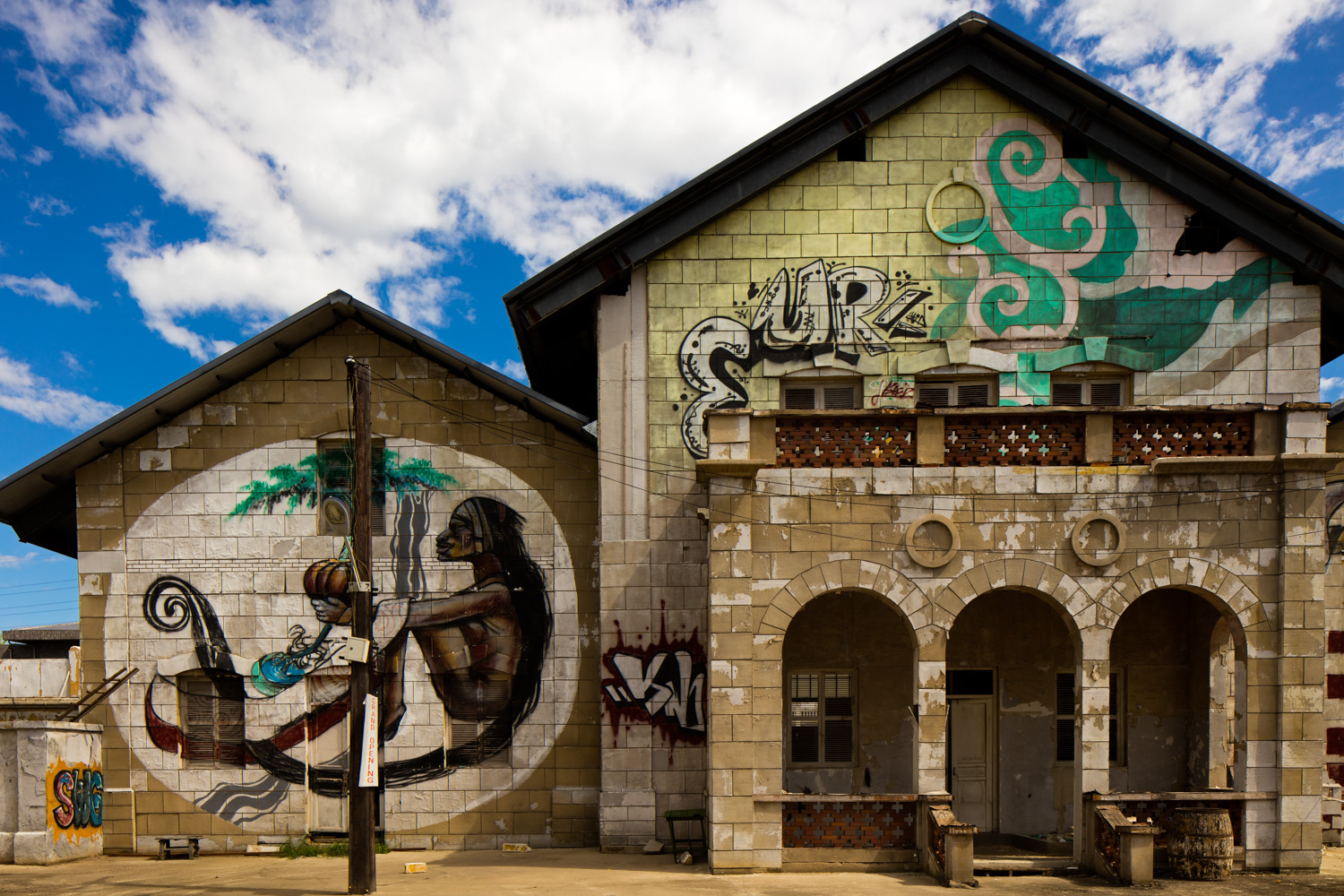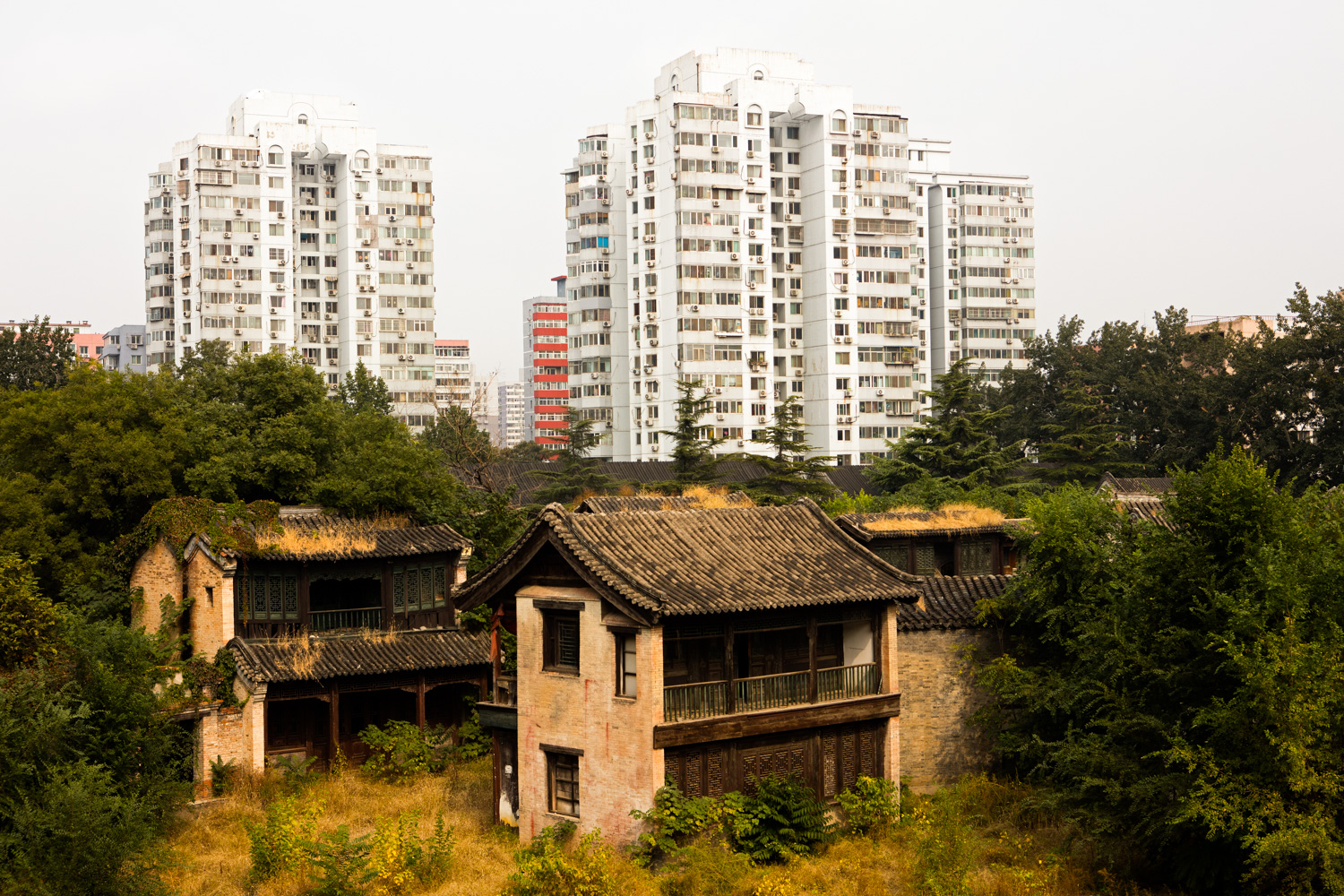Caochangdi and 798

On recent trip to China, I visited two of Beijing’s arts districts. A good map and a working knowledge of Mandarin go a long ways in navigating these reclaimed industrial zones. I had neither.
I showed the taxi driver a piece of paper with the words “798 arts district” written out in Chinese. After making our way out of the center and onto the airport road, he stopped next to a pedestrian bridge and motioned for me to get out of the car. All I saw was an enormous electronics store, but around back was the start of the arts district.
The 798 district is the largest and most famous of the Beijing arts districts, but also the most commercialized. It first took shape in the early 2000s, as artists and galleries, some evicted from other neighborhoods, were drawn to the large industrial spaces and Bauhaus-style architecture. The heart of the the complex is Joint Factory 718, constructed in the 1950s by Russian and East German engineers and used to manufacture military electronics. When The Pace Gallery opened Pace Beijing in 2008, they acquired 22,000 square feet in this complex.
As Chinese artists gained increasing attention and the international market for Chinese art took off, the 798 district attracted design company offices, loft condo developers and high-end shops and restaurants. The district is now a major entertainment destination expanded over 12 square blocks. I was there on a Sunday, and by mid-afternoon the streets were packed with Chinese families shopping and taking pictures in front of industrial relics. The scene is made more chaotic by the fact that some of the neighboring factories remain in operation.
The zone houses dozens of art spaces, but I had to pass through a lot of gift shops and mediocre art displays to find the noteworthy galleries. The 798 Photo Gallery and ME Photo Art Gallery focus, as their names suggest, on contemporary Chinese and international photography. Unfortunately the Galerie Paris-Beijing was closed when I was there, but they had just closed a show of Zhou Jun’s construction series The Red and the Black. The Timezone 8 art bookstore was also a great place to spent time.
The abundance of satirical Maoist images, while fun at first, becomes a little tedious by the end of the day. In Beijing Time, Michael Dutton and his colleagues argue that the “artwork coming out of 798 doesn’t so much aestheticize politics as marketize it.” In other words, it offers an artistic rendition of political dissent that caters primarily Western visitors’ spending patterns.

Because of rising rents in 798, many artists and galleries have been forced further outside the city center. Caochangdi, to the northeast just past the 5th Ring Road, got its start when artist and activist Ai Weiwei set up his studio and living complex there in 2000. In recent years several international galleries have moved in to the neighborhood.
Caochangdi is not as popular a destination as 798 and my taxi driver didn’t know it. Using rough directions from a gallery website, my GPS, and lots of hand signals, I directed the driver to somewhere in the vicinity. I got out of the car next to a highway overpass. Two men selling office supplies out of boxes on the street had attracted a crowd in front of a shuttered Staples superstore.
After wandering through a maze of neighborhood alleyways I ended up at White-Space Beijing. They were preparing to open an exhibition of Chinese installation artists titled Absolute Distance.
Nearby is the Three Shadows Photography Art Centre, opened in 2007 by photographer-couple Rong Rong and inri. Like other inhabitants, they found themselves in Caochangdi when their previous home was demolished. A substantial portion of the center is dedicated to showing their collaborative work. The center also organized Photospring 2010: Arles in Beijing earlier this year as part of a three-year partnership with the legendary Les Rencontres d’Arles Photography Festival.
Caochangdi has great ambitions. The boundaries are highlighted with billboards that promise “Art Harmony Joy Justice Abundance Peace.” The zone also promises subsidized live/work spaces for artists. However, as I wandered through the neighborhood, a number of the labeled ‘art space’ buildings appeared empty or under construction. Caochangdi has also been threatened with demolition as the the city of Beijing continues to expand, and its future remains uncertain.
The monthly Gallery Sights magazine lists exhibits and, most importantly, provides detailed English maps of the major arts districts. I picked up a copy at one of the galleries. The website also has maps and information but only in Chinese.





